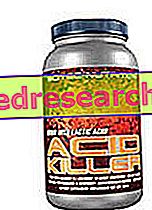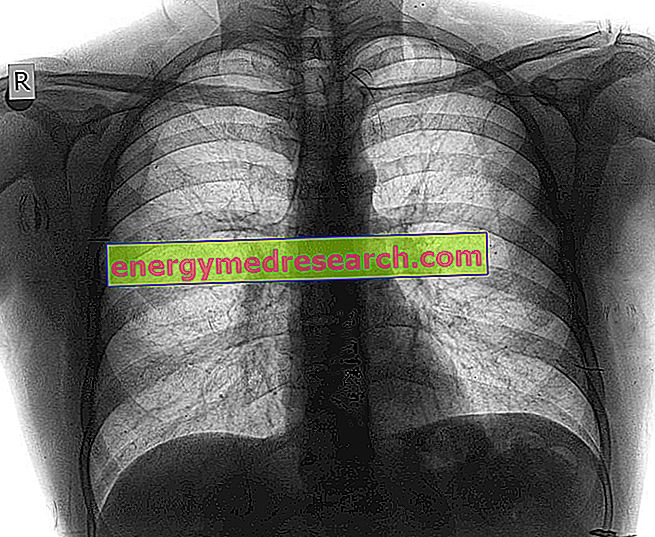What is Wheat Germ
Cariosside of Wheat and Wheat Germ
The wheat caryopsis consists of:
- the embryo or wheat germ (2-4% by weight)
- integuments or shells (about 8%)
- starchy endosperm or powdery almond (about 87-89%)
Each of these regions contains different types and percentages of nutrients, depending on the biological role it covers. The embryo or wheat germ is, for example, particularly rich in nutrients, essential for favoring germination and supporting the first stages of growth.

Anatomical region of the caryopsis | Percentage of the caryopsis | Starch and other carbohydrates (%) | Protein (%) | Lipids (%) | Cellulose hemicellulose pentosans (%) | Mineral substances (%) |
teguments | 9 | 14 | 12.8 | 2.4 | 65.2 | 5.6 |
Aleuronic layer | 8 | 12 | 32.0 | 8.0 | 38.0 | 10.0 |
Germ | 3 | 20 | 38.0 | 15.0 | 22.0 | 5.0 |
endosperm | 80 | 83.0 | 11.0 | 30.0 | 2.0 | 1.0 |
Table taken from - Food chemistry - Cabras Paolo; Aldo hammers
Nutritional properties
Wheat germ is a true concentration of nutrients such as amino acids, fatty acids, mineral salts, B vitamins and tocopherols (vit. E). Unfortunately, this embryo is eliminated together with the external envelopes during the refining process, depriving the wheat flour of a large part of its precious load of fibers, vitamins and mineral salts. This operation is necessary for organoleptic reasons, but also to increase storage times, given that the fatty acids contained in the germ rapidly go rancid.
In whole grains, on the other hand, all three parts of the grain are present and for this reason their health properties are now universally accepted.
The wheat germ can be extracted quite easily, separating it from the flour with a sieve after grinding the caryopsis. If extracted in this way, it comes in the form of small whitish flakes, which can be eaten naturally or together with other foods (yogurt, breakfast cereals, vegetables) at a rate of about 50 g per day.
Sprouted wheat germ
Wheat germ is often derived from sprouted kernels, as its nutritional properties are enhanced during the germination process. By placing the grain in contact with water, the embryo becomes the site of an intense enzymatic activity, which significantly increases its precious nutrient reservoir. The level of calcium passes in a few days from 45 to 71 mg per 100 g, that of phosphorus from 423 to 1050 mg and that of magnesium from 133 to 342 mg. Germination also significantly increases the content of amino acids and vitamins; B1 increases by 20%, B5 by 45%, B6 by 200%, carotenoids by 225%, vitamin E by 300% and vitamin C by 500%.
Home production
Wheat sprouts are therefore a better source of nutrients than dried wheat germ. They can easily be produced at home, using seeds of biological origin and soaking them in warm water for 12 hours. Then they will be placed in a deep dish, covered with a damp gauze that protects them from direct light and drying. Leaving them at a temperature of 20 ° C and taking care to wet them slightly twice a day, the wheat sprouts can be consumed after three or four days. For an adult the recommended dose is that obtained from a tablespoon of dry seeds.
Wheat germ oil
By pressing the wheat germ, the oil of the same name is obtained which is the best food source of vitamin E (133 mg / 100 g versus 18.5 mg / 100g of olive oil). This vitamin is a powerful antioxidant agent, essential in the fight against free radicals, in the defense of health and in the prevention of aging.
Wheat germ oil is also very rich in essential fatty acids, which are also precious allies of our health, as long as the food is eaten raw (not recommended for fried and fried). If taken as a supplement, wheat germ oil should be taken at the end of the meal (the fats in the food promote the absorption of vitamin E), following the manufacturer's instructions.
Consumed regularly, replacing part of the refined foods with whole grains or using specific supplements, wheat germ can fill the numerous deficiencies of the western diet, high-calorie on one side but poor of the essential nutritional principles for our well-being on the other.
octacosanol
Wheat germ also contains a substance called octacosanol, which, according to research by the American physiologist Thomas Cureton, would improve athletic performance and pituitary function, optimizing physical and mental efficiency (the pituitary gland is a gland that, producing different hormones, regulates the functionality of numerous organs and systems, such as reproductive, musculoskeletal, endocrine and nervous). Preliminary evidence suggests potential benefits also for patients with high blood cholesterol levels and for those affected by Parkinson's disease.
Wheat germ, in whatever formulation it is taken, is therefore an excellent supplement even for athletes and professional athletes.
See also: Unsaponifiables of wheat germ oil



